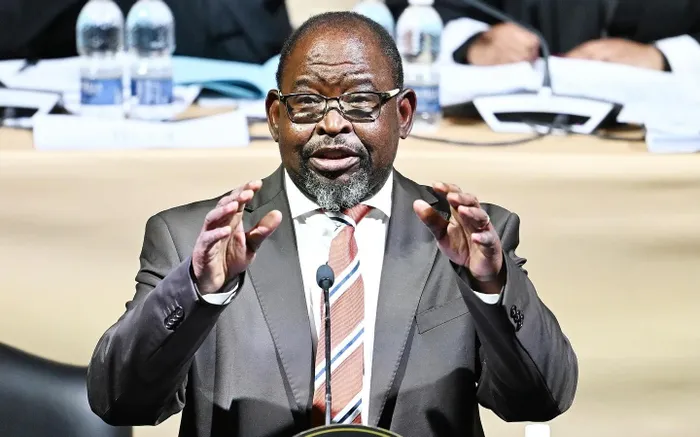South Africa’s fiscal outlook brightens slightly ahead of 2025 MTBPS
BUDGET

Finance Minister Enoch Godongwana is expected to deliver a cautiously optimistic Medium-Term Budget Policy Statement (MTBPS) on Wednesday.
Image: Parliament of SA
Finance Minister Enoch Godongwana is expected to deliver a cautiously optimistic Medium-Term Budget Policy Statement (MTBPS) on Wednesday, showing stronger revenue collection, contained expenditure growth, and a smaller-than-expected deficit, even as sluggish growth and high debt remain major fiscal challenges.
According to Nedbank's economist, Isaac Matshego, the budget deficit is projected to narrow to 4.4% of GDP in FY2025/26, down from the 4.8% estimated in Budget 2025, thanks to higher-than-anticipated tax revenues and disciplined spending.
“Revenue growth has been boosted by robust collections in personal, corporate, and value-added taxes,” Matshego said last week, noting that gross tax revenue could overshoot earlier estimates by R60 billion in FY2025/26 and as much as R200bn over the medium term.
Available government finance figures for the fiscal year to date show a modest improvement in revenues when compared to the same period last year.
The South African Revenue Service (Sars) collected R47.1 billion in overdue taxes during the first six months of the fiscal year, raising its recovery target to R135bn. Improved efficiency, firmer domestic demand, and high precious metal prices helped lift collections.
Investec economist Lara Hodes also said they were expecting revenue receipts to increase further on the rally in precious metal commodity prices.
Government expenditure growth is projected to come in at 6.5% in FY2025/26, lower than Treasury’s 7.5% forecast in May. Delays in finalising the national budget and tighter fiscal controls have helped keep spending in check.
A three-year public sector wage agreement signed in February limits annual increases to 4–6%, depending on inflation. Debt service costs remain high — at around 19% of total revenue — but are expected to grow more slowly as interest rates ease.
Matshego said the gross debt-to-GDP ratio will likely peak at 78.1% in FY2027/28, before easing gradually as the government maintains a primary surplus of about 2% of GDP over the medium term.
Godongwana will present the MTBPS amid a modest domestic recovery, with growth supported by improved energy supply, stronger consumer spending, and a rebound in agriculture and tourism.
However, export performance remains weak due to declining global demand and US trade restrictions following the expiry of Agoa duty-free access in September.
Nedbank expects GDP growth of 1.2% in 2025, rising slightly to 1.4% in 2026 and 1.6% in 2027, underpinned by lower inflation, easing interest rates, and improving logistics performance.
Matshego said the MTBPS may also introduce key policy reforms, including a revised inflation-targeting framework, narrowing the current 3–6% band to 2–4%, and a possible fiscal anchor rule to legally cap expenditure growth relative to revenue.
“The MTBPS will likely reflect a slightly brighter fiscal position, with Treasury showing progress in stabilising government finances,” Matshego said. “Much of the improvement will come from stronger-than-expected revenue growth and improved tax efficiency.”
However, Aluma Capital chief economist, Frederick Mitchell, said the MTBPS will test the government’s resolve to pursue structural reforms over short-term fiscal manoeuvres like tax hikes.
Mitchell said the public debt now exceeds R5.8 trillion, roughly 78% of GDP, with debt service costs surpassing spending on health or housing and yet local companies are sitting on R1.8 trillion in idle cash reserves — funds that could fuel investment and job creation if the business climate were more predictable.
“With no room for more borrowing, South Africa must look inward,” Mitchell warned. “The reliance on tax hikes, such as the recent VAT increase, is unsustainable. The only durable solution is faster, private sector–driven growth.”
He said the MTBPS must serve as a blueprint for growth-led fiscal recovery, not merely as a statement of budget adjustments.
“South Africa stands at a crossroads,” Mitchell said. “The path to prosperity lies not in squeezing taxpayers but in enabling growth through structural reform. By rebuilding infrastructure, improving governance, and creating a stable investment climate, the country can restore hope and opportunity.”
BUSINESS REPORT